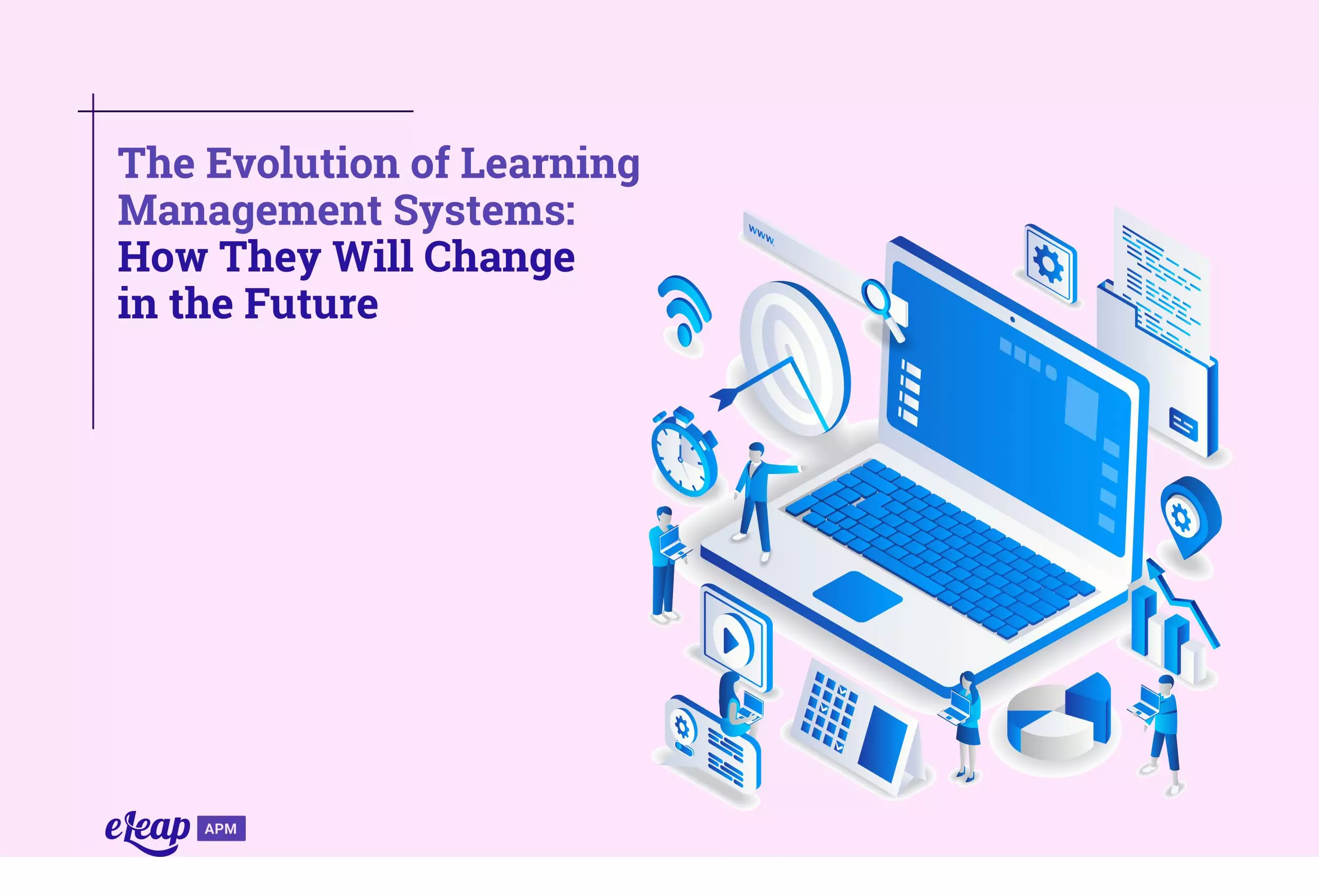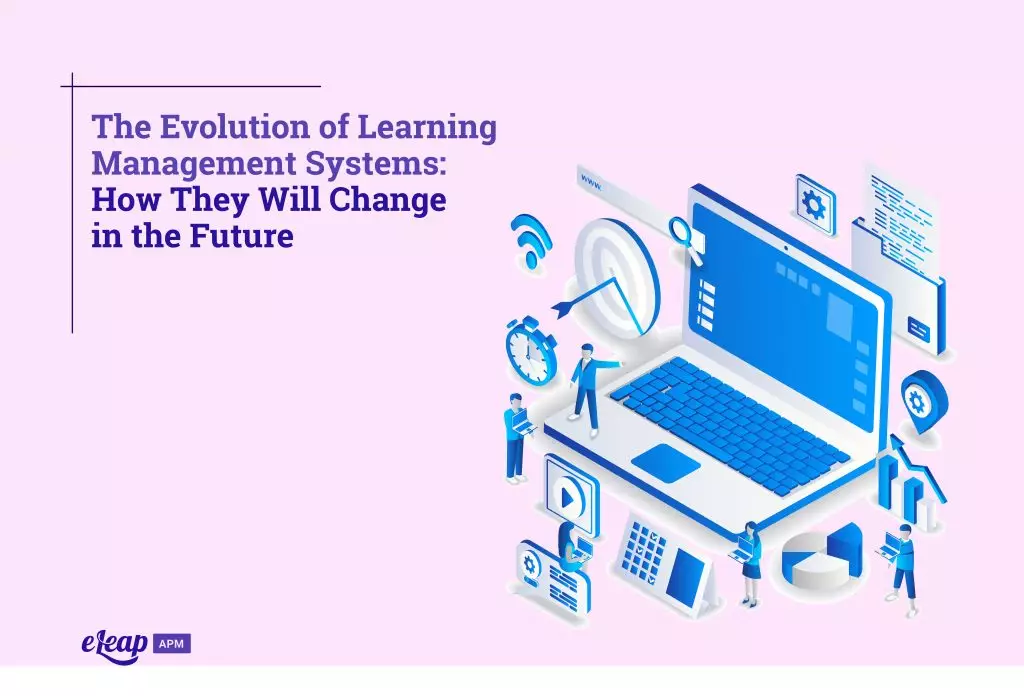The Evolution of Learning Management Systems: How They Will Change in the Future

Learning management systems have played a central role in employee training and education for some time now. They’ve also been used in the world of formal education for quite some time. Distance education, online universities, college classes delivered via your home PC – all of these are based on an LMS and its capabilities.

They’ve come a long way from what they once were, but like the rest of our world, learning management systems continue to evolve and grow. We’ve seen them go from a focus on the SCORM model to the X-API standard. We’ve seen them grow from a handful of systems to hundreds of options.
What’s the future look like, though? We’re actually moving toward what’s called a next-generation learning environment, or NGLE. What does that mean, though? We’ll explore some of the key ways learning management systems are evolving below.
Interoperability
Once upon a time, learning management systems were pretty limited when it came to how, where, and when they could operate. Today, we’re seeing increasingly flexibility here, but the LMS of tomorrow will need to offer significantly better interoperability. That delivers increased flexibility in when, where, and even how learners can complete modules, but it also touches on almost every single aspect we’ll discuss below.
Access Anywhere
One of the most significant changes will be a continued shift toward allowing learners to complete modules from anywhere at any time. This is a massive change from the previous paradigm. In the past, employees had to visit a central training room or area in the HR department, sit at a PC, and complete their training. In some cases, there wasn’t even a PC involved. Training videos were played on DVD players (or VCRs in some cases) without any level of interactivity at all.
Today, learners can do so much more. They’re not constrained to a single training room, the need to use a specific PC, or even required to be at work to take their training courses. They can complete them from the PC at their desk. They can progress while they’re at home. In some cases, they can even take classes, complete quizzes, and pass tests on their smartphones.
Just for You
Another ongoing trend in the world of eLearning is the shift from one-size-fits-all to individualized, personalized experiences. We have known for a long time that people learn better in different ways – some are auditory learners, others learn best by being hands-on – and yet so many businesses, organizations, and even schools, still try to use an LMS that delivers the same experience to every single learner.
In the future, we’ll see that change immensely. We’ve already seen a shift toward better personalization, but that is only the tip of the proverbial iceberg. Shortly, learning management systems and those who manage them will be able to:
- Provide a curated, personalized path for learning tailored to individual learners
- Adapt the entire learning process to unique needs, challenges, and requirements
- Provide ready-made resources at a moment’s notice to ensure accurate learning
- Add custom-made content that fits the organization’s needs, but also the learner’s requirements
- Provide searchability so that learners can discover resources, modules, and other content when they’re needed
- Be available offline so that learners can move forward even without an Internet connection
Collaboration and Communication
One of the most important shifts in learning management capabilities is the move away from a solo experience and toward greater collaboration and communication. No longer is an employee required to isolate themselves in a world of eLearning. That’s true today in many cases, but the LMS of tomorrow will offer much more than what you might expect, including:
- Online chat rooms where learners can discuss their experience, offer help to others, and interact with one another
- Unique communication tools, such as chat programs or messenger applications that connect learners to one another
- Group learning capabilities that allow learners to complete courses “solo”, but ensure that there’s always help available from others in real-time
- Mentorship programs that allow employees to help one another by sharing insight and experience
Interactivity
In the past, learning management systems were just delivery systems for content that isolated learners and forced them into passivity. Today, that is changing. We’re seeing an accelerating shift toward greater interactivity at all levels of learning, from replacing training videos with interactive animated experiences to gamification, social learning, interactive video, and so much more.
Interactivity engages learners on a deeper level. They move from being passive observers to active participants. Interactivity alleviates boredom, helps ensure that learners are better able to master course material, and even speeds up the entire learning process.
Analytics and Tracking
Whether you operate a for-profit business, a nonprofit organization, a school, or something entirely different, you must be able to monitor and track your learners’ progress. In the past, this required hardcopy records, manual recording processes, and a lot of back and forth that wasted time and caused errors. The LMS of the future does away with these issues.
As learning management systems continue to evolve, they’re adopting tools that more closely resemble the offerings of something like Google Analytics – you’re able to track which learners have completed what modules, which ones still need to be completed, how long they spent learning, who needs professional CE for compliance, and so much more. All of this information is available at a glance through a central dashboard, ensuring less wasted time and better accuracy.
In Conclusion
At the end of the day, the future of the learning management system can be glimpsed in the systems of today. The trends we’re seeing now will not disappear but will come into sharper focus. Interactivity, personalization, collaboration, communication, and better access to analytics will all play central roles in the development of tomorrow’s learning management systems.